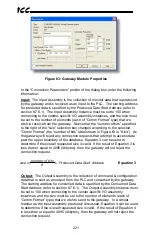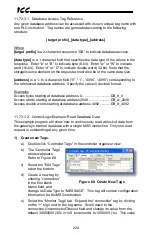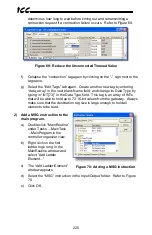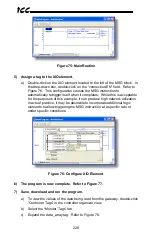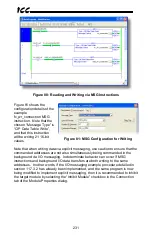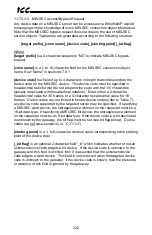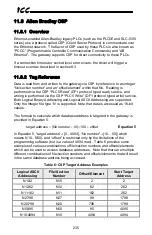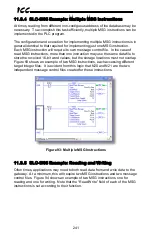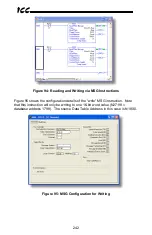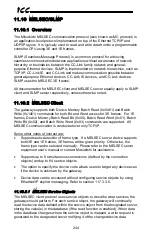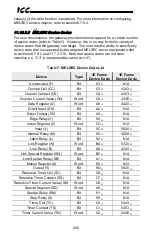
233
ICC
Examples
Access Request
Tag
Using connection object “Q04”, target Data
Register (0xA8) starting at device point 0
MC_Q04_A8_0
Using connection object “Q04”, target Input
Relay (0x9C) starting at device point 1000
MC_Q04_9C_1000
Using connection object “QJ71E71”, target
unknown word device (0xFF) starting at
device point 125
MC_ QJ71E71_FF_125
Using connection object “QJ71E71”, target
unknown bit device (0xFE) starting at device
point 1250
MC_ QJ71E71_FE_1250_b
Note
If accessing a bit device on a MELSEC server, each bit is actually encoded as an
entire byte by the server. If the targeted bit is 0, then the resultant byte is 0; else
the resultant byte is non-zero.
Please refer to the MELSEC server equipment user’s manual for limitations on
the number of points processed per communication.
11.7.3.3.6 ControlLogix Example: Read MELSEC Device Data
This example program will demonstrate bypass access to device data on a
MELSEC server. The configuration and execution for implementing a MSG
instruction is in general identical to that in section 11.7.3.3.2. There are,
however, two discrepancies to note:
1. The
Source Element
must take the form of a MELSEC tag name structure.
In this example, the “cnxn_name” field is “Q04” (as derived from the
connection object’s name shown in Figure 82), the device code is a8 (data
register), and the starting point is 0. Refer to Figure 83.
2. The data type of the
Destination Element
depends on the device code in
use. If the device code targets a word device, then the
Destination Element
must be specified as type INT. If the device code targets a bit device,
however, then the
Destination Element
must be specified as type SINT.



